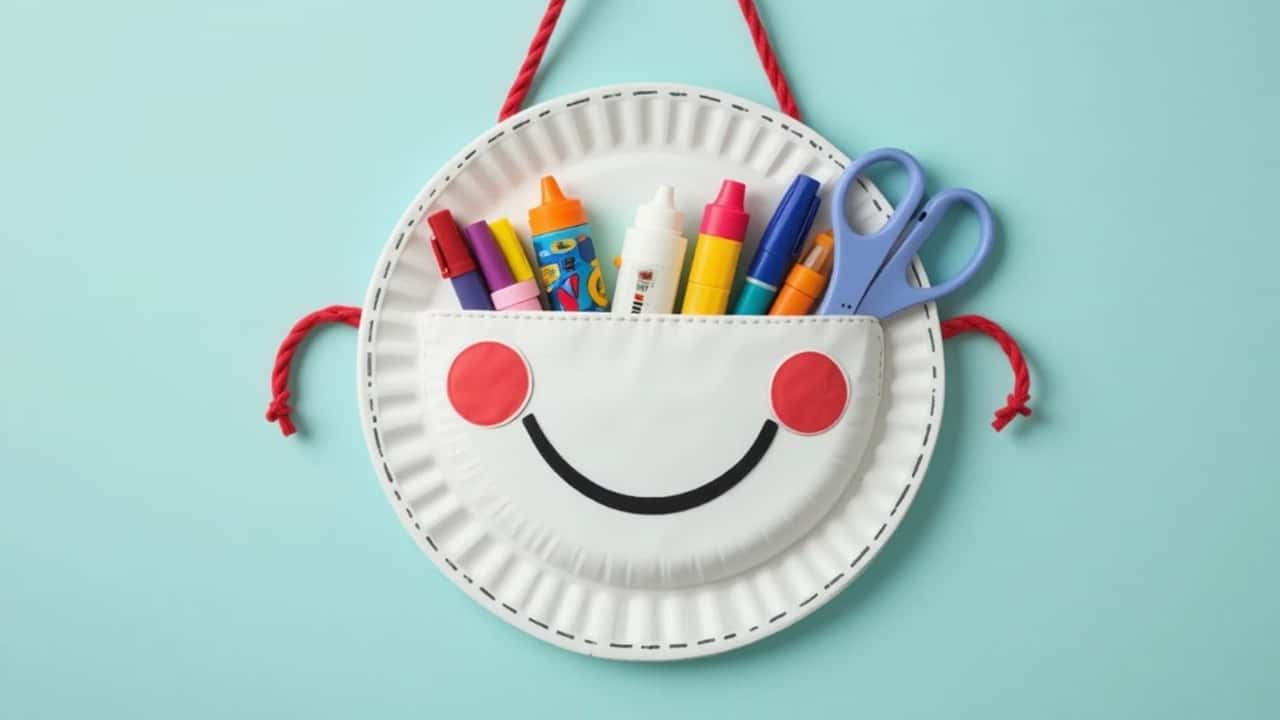Today, I’m excited to introduce you to a delightful project i.e. a paper spider craft for kids.
This little guy is perfect for a rainy afternoon activity, a Halloween decoration that won’t give your grandma nightmares, or even a classroom project that combines creativity with a touch of science (spiders are fascinating).

In this article, I’ll walk you through the step-by-step process of creating your very own adorable spider friend.
The best part? You don’t need anything fancy to make this cute paper spider.
Just grab some construction paper, scissors, paper spider template (for cutting the shapes), and a little bit of glue, and we’ll be building our adorable arachnid together in no time.
Let’s take a quick look at the template making process followed by a step-by-step process to craft our cute spider.
Step 1: The paper Spider template

The image above showcases a paper spider craft template, readily available on my blog.
This paper spider template is designed to be user-friendly, but feel free to unleash your creativity.
You can customize the shapes to create your own unique spider, maybe add stripes for a zebra spider or spots for a ladybug spider?
We create all our craft project templates ourselves, just like this spider template.
In almost all cases I start by sketching out the shapes with a pencil until they’re just right.
Then, I finalize the design with a black marker for a clean and easy-to-use template (That’s my modus operandi).
Step 2: Vibrant Colorful Cutouts

Once you’ve downloaded and printed the template, the next step involves cutting out the shapes from colorful paper sheets.
If you look at the image above, you’ll find that I’ve opted for a gray paper for the spider’s head, black for the legs, red for the body and mouth, yellow for shading the body, and white for the eyes.
However, feel free to experiment with your own color combinations when crafting the paper spider.
Step 3: Assembling the Paper Spider

Now that all the cutout shapes of our spider were ready, I began the assembling process.
I started by sticking together the main structure of the spider, including its head and body.
Note: It’s important to ensure proper alignment to achieve the correct structure of this cute spider.
Step 4: Fixing the Spider Legs

Moving on, it was time to attach the spider legs to its body to give the structure a 3D effect.
I began by securing the four legs on its left side with precise alignment.
Then, I aligned and affixed the remaining four legs to its right side.
With the legs in place, the paper spider was now ready to wander and crawl around.
Step 5: Completing The Face

To bring our paper spider to life, I focused on giving it expressive eyes and a cute mouth.
First, I glued on a pre-cut mouth made from red paper, its edges outlined with a black marker for definition.
Next, I positioned and secured the spider’s eyes, which were simple white circles outlined in black marker just like the mouth.
Step 6: The Body Shades

The next step was to add some realistic details to our paper spider.
Real spiders often have a variety of markings, including a special spot called the “heart mark.”
I’ll mimic this by creating some color variations on the spider’s body.
I used yellow construction paper to cut out a mix of oval and round shapes.
These will become the “shades” on our spider, giving it a more lifelike appearance.

In the final image, the spider resembles a realistic 3D cartoon character that seems to have emerged from your TV screen.
Video Walkthrough of Paper Spider Craft for KIDS
Final Thoughts
With the easy-to-use template and endless color possibilities, kids can unleash their inner designers and build unique spider friends.
The best part? This paper spider craft sparks curiosity about spiders themselves.
Use this project as a launchpad to explore spider facts i.e. their body parts, webs, or even their helpful role in the ecosystem.
Note: For your reference I have shared a complete video walkthrough of this particular paper Spider craft activity on our official YouTube channel.
Frequently Asked Questions
How long did it take to make this paper Spider craft?
It took about 15 minutes for me to make this paper Spider craft using the ready template from our website.
Is there a recommended age for this paper spider craft?
This craft can be adapted for different ages. Younger children (3-5 years old) can benefit from pre-cut shapes and assistance with gluing. Older children (6+) can handle more of the assembling independently. In either case adult supervision will be needed especially for the cutting part.
What can I use the paper spider for besides decoration?
You can use this paper spider as a puppet for storytelling or role-playing games. Create a spider web using yarn and incorporate the paper spider into a larger craft project. If possible, make multiples and play a spider-themed counting or matching game with young children.
How can I make the paper spider craft more educational?
While crafting, discuss the different parts of a spider’s body and their function (cephalothorax, abdomen, legs, eyes, etc.). Research different spider habitats and discuss where they might find your paper spider in the real world (forests, gardens, homes, etc.). Also, look up the benefits of spiders and their role in the ecosystem (pest control, pollination, etc).





